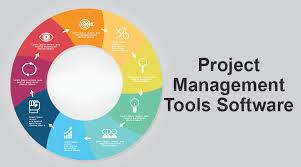What are tools?? Tools are tools or software designed to help people perform specific tasks quickly and efficiently. In the field of technology, tools play an important role in automating processes, improving product quality and supporting teamwork.
VinaHost will explain the concept of tools, their roles, advantages and disadvantages, and selection criteria, helping you better understand how to use them.
1. What is a tool?
A tool is a tool that supports the performance of a specific job or task. In technology, “tools” are often software, applications, or platforms designed to help users with data processing, project management, programming, design, security, and many other tasks.
2. Classification of common tools
Below are the most commonly used tools.
Classification of common tools
2.1. Software development tools
These tools support the programming and software development process, helping to increase efficiency and reduce errors in the source code.
- IDE (Integrated Development Environment): Examples are Visual Studio, IntelliJ IDEA, Eclipse.
- compiles: Like GCC (GNU Compiler Collection) for C/C++, javac for Java.
- Debugger: Như GDB, Xcode debugger, Chrome DevTools.

2.2. Project management tools (Management tools)
These tools help organize and manage projects, track progress, divide work, and communicate within a team.
- Overall project management: Asana, Trello, Jira.
- Time management: Toggl, Clockify.
- Document management: Google, Microsoft.

2.3. Design tools
It is used to design user interface (UI), user experience (UX), graphics and other visual elements.
- Graphic design: Adobe Photoshop, Illustrator, CorelDRAW.
- UI/UX design: Figma, Sketch, Adobe XD, InVision.
- Vector drawing: Affinity Designer, Gravit Designer.
2.4. Automation Tools (Automation Tools)
These tools help automate repetitive tasks, improve work efficiency and reduce human intervention.
- Workflow automation: Zapier, IFTTT.
- Automation of software development: Jenkins, Circle CI, Travis CI.
- Marketing automation: HubSpot, Mailchimp
2.5. Data analysis tools
This tool helps in collecting, analyzing and visualizing data for making business decisions.
- Data analysis software: Microsoft Power BI, Painting.
- Data analysis programming language: Python (in Pandas bibliotekom, NumPy), R.
- Tools for analyzing statistical data: SPSS, SAS.
2.6. Security tools
Security tools help protect systems and data from threats and attacks.
- Network security: Wireshark, Nessus, Nmap.
- Scan for malicious code (Antivirus): Bitdefender, Norton, Malwarebytes.
- Encryption Tools: VeraCrypt, GPG (GNU Privacy Guard).
see more: What is a GUI? | Overview of knowledge about graphical user interface
3. The role of tools in the field of technology
3.1. Increase productivity
Tools play an important role in increasing work productivity by automating repetitive or complex tasks, thereby saving human time and effort. For example, CI/CD tools like Jenkins or GitLab helps automate software testing and deployment, allowing developers to focus on creative tasks instead of having to perform manual steps. Thanks to this, work efficiency is significantly improved, which helps to complete projects faster and optimize resources.
3.2. Improve quality
Technology tools help improve product quality by rapidly testing and detecting errors, ensuring the final product meets the highest standards. For example, automated testing tools such as Selenium or Postman can detect software bugs early in the development process, avoiding serious problems once the product is put into use. This not only reduces the cost of debugging, but also increases reliability and provides a better experience for the end user.
3.3. Group work for support
In large projects, especially when members work remotely, teamwork support tools play an important role in ensuring effective coordination. Tools like Trello or Asana help manage tasks and track progress, while Slack facilitates quick and easy communication between members. Thanks to this, the work group can reasonably divide the work, update information promptly and effectively achieve common goals, even when they are located in different locations.
3.4. Satisfy needs
The tool is designed to meet different needs in each specific area, helping users to solve problems quickly and efficiently. For example, Tableau is a powerful tool for in-depth data analysis, while Canva caters to basic graphic design needs for non-professionals. These tools help users achieve their goals without investing too much time or expertise. This makes the tool an ideal solution for solving modern challenges and ensuring that changing user requirements are met.
The role of tools in the field of technology
4. Advantages and disadvantages of the tool
4.1. An advantage
- Increase work efficiency: It helps to automate and optimize processes, saving time and effort.
- Quality improvement: Testing and analysis tools ensure that products meet high standards.
- Team work support: Assists in business management, communication and effective coordination among members.
- Ease of access: Many tools have a friendly interface, easy to use, suitable even for non-professionals.
- Highly customizable: It enables adaptation to the specific needs of each area or project.
4.2. Disadvantages
- Costs: Some tools require high licensing or service fees.
- complexity: Some tools require users to have specialized knowledge to use them effectively.
- Dependent: Depending too much on a tool can cause problems when the tool breaks or is no longer supported.
- Compatibility: Not all tools are compatible with all other systems or software.
- security: It can be a security risk if not updated regularly or configured properly.
5. Some criteria for selecting tools
Here are some tool selection criteria you can consider:
- Suitable for needs: It should meet the specific objectives of the job, ensuring that the features are powerful enough to solve the problem.
- Ease of use: A friendly and familiar interface helps users quickly master the tool, especially for non-experts.
- Reasonable price: Consider features and price, prioritize tools that offer good value or have a free version.
- Compatibility: The tool must work well with the systems, software or processes used to avoid conflicts.
- Performance and stability: Choose a tool with high performance, stability, low errors and good technical support from the vendor.
- Scalability: You should choose a tool that can be extended or integrated with other tools as needs grow.
- security: Prioritize tools that are regularly updated and have strong security features to protect data.
6. Summary of the list of tools on VinaHost
Below are the free tools that VinaHost offers:
This tool supports ticket creation SSL certificate (CSR) quickly and easily. You just need to enter the required information and the tool will generate the appropriate CSR to install the SSL certificate for the website.
Create a CSR
This tool helps test network connection speed, including download speed, upload speed and latency (ping). This is a useful tool for assessing the current quality of Internet services.
This tool allows you to quickly and easily share and upload files online. You can upload files and share links with others so they can download them.
Share files
This tool provides a platform for downloading and sharing plugins and themes, making it easy to find and install extensions for platforms such as WordPress or other applications. Contact service cheap hosting, Hosting NVMe, WordPress Hosting, Business hosting, Cheap VPS, Premium VPS, VPS NVMe, VPS MMO.
Share plugins
Synchronize mail between 2 imap servers
This tool helps you quickly and efficiently synchronize mail between two IMAP servers, which is useful for moving emails between different email services.
Synchronize mail between 2 imap servers
Testing tool IP address This helps you look up information about an IP address, including geographic location and other network parameters, helping you determine the origin and connection status of that IP address.
Check the IP
Testing tool DNS helps you determine the configuration and status of DNS records for domain name. This tool is useful in troubleshooting DNS problems or optimizing DNS configuration when domain name registration u VinaHost.
Check DNS
This tool allows you to check a website’s SSL certificate, including expiration time, certificate validity, and security parameters. This is a necessary tool to ensure that your website has a valid SSL certificate.
Check SSL
This file uploader helps you upload files online quickly and securely, supporting file sharing via links easily and conveniently.
Upload File
E-mail address verification tool
This tool helps to check the validity and authenticity of the address email, helps you verify that email is properly formatted and exists, helping to minimize email sending errors.
E-mail address verification tool
7. Some questions related to the tool
7.1. What is a software tool?
Software tools are programs or applications designed to help users perform a specific task, such as programming, design, project management, or security. For example, Microsoft Excel is a tool that supports spreadsheet processing, and Git is a version control tool for developers.
7.2. What are marketing tools?
Marketing tools are tools that support marketing activities, helping businesses to attract customers, analyze data and optimize marketing strategies. For example, Google Analytics helps analyze website traffic, while Mailchimp supports marketing management and sending.
see more: What is digital marketing? | Digital Marketing Overview
7.3. What are dev tools?
Dev tools (Developer tools) are tools that support developers during the software or application development process. These tools can be IDEs (such as Visual Studio Code), debuggers (such as Chrome DevTools), or version control systems (such as Git). They make it easy to code, test, and deploy software.
7.4. What is Auto tool?
Auto tools are automation tools that help perform repetitive or complex tasks without the need for manual intervention. For example, Zapier automates workflow between applications, or Selenium automates software interface testing. These tools help save time and increase productivity.
8. Summary
In short, tools are indispensable tools in technology, which help to optimize processes, increase productivity and improve the quality of work. Choosing and using the right tools that suit specific needs will help save time, increase work efficiency and support development in many different fields.
Understanding the tools will help us to apply them optimally, achieving the best results at work. Visit the VinaHost blog HERE to follow more new articles. Or if you want more advice about the service, you can contact us via:
